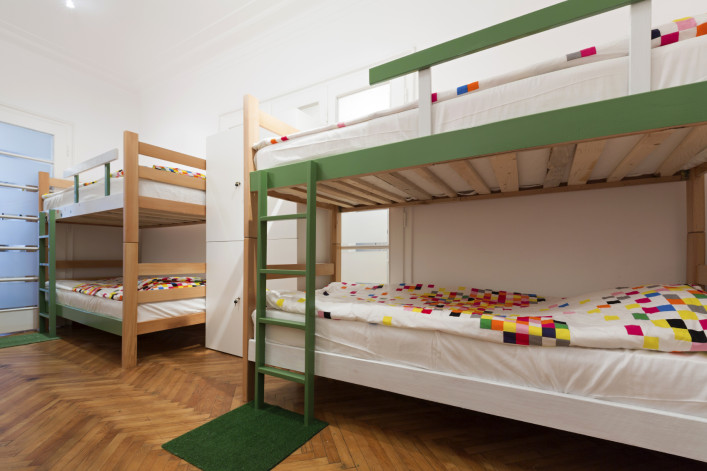Overcrowding plagues NYC apartments—but like everything else, it's complicated

Is your apartment starting to feel like the 6 train at rush hour? Many other New Yorkers are feeling that way, too. A new report from the New York City Comptroller's office confirms that New York City apartments are getting more crowded.
"Nearly 1.5 million New Yorkers now living in a crowded or severely crowded home," comptroller Scott Stringer said in a release. "In response, the city must elevate crowding as a key housing priority to be addressed, while at the same time creating more affordable housing," he said.
The report, flagged by CityLab, breaks the problem down into two sections: "crowded dwellings," aka units with more than one person per room; and "severely crowded dwellings," which are described as units with more than 1.5 persons per room.
Getting more crowded
The percentage of apartments being described as "crowded dwellings" increased from 7.6 percent in 2005 to 8.8 percent in 2013—a 16 percent jump. Interestingly, the number of apartments that are "severely crowded" has gone up by much more—almost 45 percent in the same time period.
And it seems the very definition of a studio apartment is changing. By 2013, the number of studios that house more than two people increased by 365 percent (from 2.9 percent to 13.5 percent).

The numbers, broken down by borough, are sobering
Broken down by borough, Brooklyn has seen the largest increase in apartment overcrowding: a 35 percent increase in crowded units from 2005 to 2013 (now, over 10 percent of Brooklyn apartments are overcrowded). The Bronx still has the most overcrowding—12.4 percent of its apartments are overcrowded.
Demographics are changing
And it's not just low-income New Yorkers who are squeezing in. The average household income for people living in crowded households increased by 2.7 percent between 2005 and 2013; the median rent, meanwhile, increased 12.8 percent. That means that rents have increased more than wages.
But the rules for household sharing aren't always cut-and-dry
Landlords can, and do, evict tenants for overcrowding. "There are laws, regulation, and most leases, which restrict how many people can live in an apartment at once,'" says Sam Himmelstein, a partner at Himmelstein, McConnell, Gribben, Donoghue & Joseph in Manhattan. "Almost all leases restrict occupancy to tenant and tenant’s immediate family. Plus, he says, "many regulations governing various forms of subsidized housing have occupancy restrictions."
But it's not always so clear cut. "Despite that, New York has the Roommate Law, which allows unrelated roommates in certain circumstances."
And room-to-person ratio doesn't tell the whole story
Sarah Watson, deputy director of the Citizens Housing Planning Council noted that "extreme crowding is still in very low numbers ... so any growth seems proportionally large." And there are some nuances when it comes to apartment crowding calculations, she says.
For one thing: They "do not take into account the size of a unit. A 'studio' for instance could be huge and fit a large household in it with clever configurations. It also does not take into account cultural choices about families living together, i.e. they may favor children sharing bedrooms, or adult family members sharing."
The overcrowding issue is of concern on a person-to-room basis, yes, but square footage matters, too. Take, for instance, this one-bedroom that has a "living room" that looks like it can barely fit a chair.
Watson says it's important to understand the household configurations of these crowded households, "i.e. are there room-mates? Multiple children? Adult relatives? When did they get added to the household and why? How are they really sharing/ dividing the spaces? In order to get to grips with any nuance about the real issues at hand and possible solutions," she says.
Related:
Does the new communal living trend actually make NYC more affordable?
Farm to City: I share a studio apartment with a total stranger



























